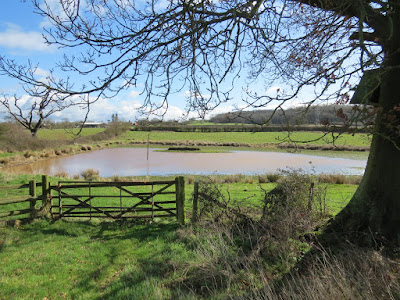A largely sunny morning with a very light westerly breeze. I decided it was time to start surveying the breeding birds for the first time since 2017. The route was a complete circumnavigation of the area from the church.
It's arguably a week too early, but the conditions were perfect and plenty of residents are in full song. Although I won't know the full picture until mid summer, it was clear that some of the former staples have nose-dived in numbers. Not a single Yellowhammer or Greenfinch was seen.
There were plenty of good things to see though. The highlight being my first
Wheatear of the year, an absolute cracker at the top of the rise Dave and I call the raptor watchpoint.
 |
| Wheatear |
Earlier I had seen my first singing
Blackcap (excluding the wintering bird in Winyates East) at the edge of Bannams Wood.
 |
| Blackcap |
A surprise encounter, more for where it was than for what it was, came at the extreme south end. I realised I could hear a Little Ringed Plover, and eventually spotted it flying towards and over me. There is a tiny new scrape just beyond my boundary, and I suspect it was checking it out.
I ran up a steady accumulation of singing passerines including 11 Chiffchaffs, 14 Blackbirds, 22 Robins, and 23 Wrens.
 |
| Chiffchaff |
Due to the route I chose, it was late morning before I reached the flash field. This contained 27 Teal, two Shelducks, a Green Sandpiper, a Snipe, six Lapwings, and two Little Ringed Plovers. The Little Owl was visible, and in the field beneath its tree a single Jay was hopping around searching for food of some kind.
 |
| Jay |
There were relatively few insects on the wing, but I did at least add
Peacock to the butterfly year list. Neither of the two I flushed landed where I could find them again though.




























